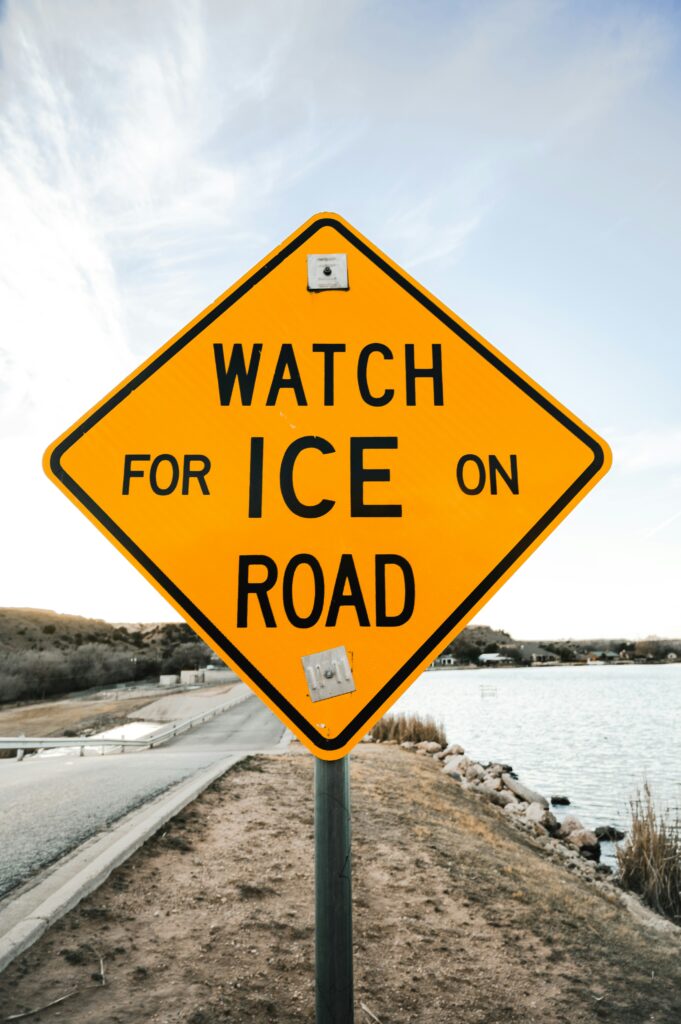Motorcycle Crash on Snow or Ice: Who’s at Fault and What You Need to Know
Motorcycles are built for speed, agility, and freedom, but riding in winter conditions can pose serious risks. Snow, ice, and slippery roads can make riding a motorcycle dangerous. If you crash in such conditions, it’s important to understand who is at fault and what steps to take to protect yourself. This guide explains how motorcycle accidents happen in snow or ice, who might be at fault, and what you should do afterward.
1. The Dangers of Riding in Snow and Ice
Winter conditions present unique challenges for motorcyclists. Unlike cars, motorcycles only have two tires, making them less stable on slippery surfaces.
- Reduced Traction: Motorcycle tires are designed for dry or wet roads, but not for icy conditions. On ice, the tires lose traction, making it difficult to stop or steer effectively. You must ride with extra caution in these conditions.
- Hidden Hazards: Snow and ice can conceal dangerous road hazards, such as potholes, cracks, or debris. These hidden dangers can catch you off guard, increasing the risk of a crash.
- Limited Visibility: Snowstorms or fog can reduce visibility. This makes it harder to spot other vehicles or hazards in time, and it also makes it more difficult for drivers to see you.
Because of these dangers, it is usually best to avoid riding in snow or icy conditions. However, if you must ride, it’s crucial to understand the legal aspects if an accident occurs.
2. Who’s at Fault in a Motorcycle Crash on Snow or Ice?
Determining fault after an accident is crucial. Several factors influence liability in motorcycle crashes during winter weather.
- Rider’s Responsibility: As a rider, you must take extra precautions in hazardous conditions. If you speed, fail to adjust your riding style, or don’t wear proper gear, you could be partially or fully at fault for the crash. Speeding on icy roads, for example, can easily lead to accidents.
- Driver’s Responsibility: If another vehicle is involved, the driver may share some of the responsibility. For instance, a driver who speeds, texts, or drives recklessly can be found at fault for the crash.
- Road Conditions and Negligence: Sometimes, poor road conditions contribute to accidents. If a road is not properly treated with salt or sand, the responsible government agency may be liable for the crash.
In many cases, both parties could share responsibility. If both you and the other driver are at fault, you may still be entitled to compensation, depending on the laws in your state.
3. What to Do After a Motorcycle Crash on Snow or Ice
If you crash on snow or ice, follow these steps to protect your health and legal rights:
- Check for Injuries and Seek Medical Attention
Your health is the top priority. Even if you don’t feel injured, seek medical attention right away. Some injuries, like concussions or internal damage, may not be immediately visible but can be life-threatening. - Call the Police
Always report the accident to the police. A police report can be essential in determining fault and supporting your insurance or legal claims. When speaking to the police, be factual and avoid admitting fault or speculating on the cause of the accident. - Gather Evidence
Collect as much information as you can:- Photos: Take pictures of the accident scene, including the road conditions, damage to your bike, and any visible injuries.
- Witness Statements: If there are witnesses, ask for their contact details and request statements on what they saw.
- Driver Information: Record the other driver’s name, contact information, and insurance details. Also, if poor road conditions contributed to the crash, make a note of that.
- Notify Your Insurance Company
Report the accident to your motorcycle insurer immediately. Stick to the facts and avoid making assumptions. If another vehicle is involved, the other driver’s insurance may also play a role in covering the damages. - Consult a Personal Injury Lawyer
Winter weather crashes can be complex. Consulting an experienced motorcycle accident lawyer is crucial. They can help you navigate liability, handle insurance claims, and ensure you receive compensation for medical bills, lost wages, and pain and suffering.
4. Winter Motorcycle Riding Tips
Although avoiding snow and ice is ideal, there are precautions you can take if you must ride in winter conditions:
- Ride Slowly and Smoothly
Avoid sudden movements. Ride at a slow and steady pace, keeping acceleration, braking, and turning smooth to maintain control and prevent skidding. - Avoid Ice
If you see patches of ice, steer clear of them. Ice is often difficult to see, and it’s extremely slippery. - Wear the Right Gear
Make sure you wear proper gear, including a full-face helmet, gloves, boots, and waterproof clothing. This will help you stay warm and protected from the cold and injuries. - Use Winter Tires
Winter tires are designed to offer better traction on snow and ice. Consider using them if you must ride in these conditions.
5. Conclusion
Riding a motorcycle in snow or ice is risky. If a crash happens, determining fault can be complicated. It might involve the rider, another driver, or even the road conditions. However, by riding cautiously and following the proper legal steps, you can protect yourself and improve your chances of a favorable outcome.
If you’re involved in a motorcycle crash on snow or ice, prioritize your health, gather evidence, and consult a motorcycle accident lawyer. With the right precautions and legal support, you can ensure your rights are protected after a crash.

